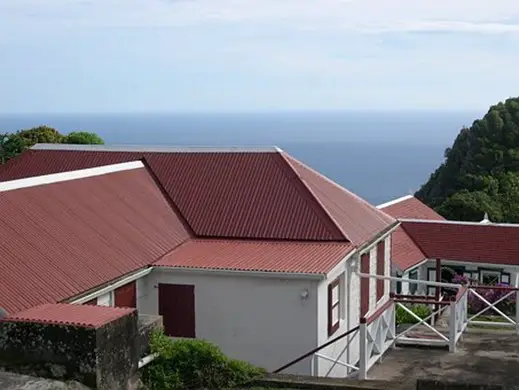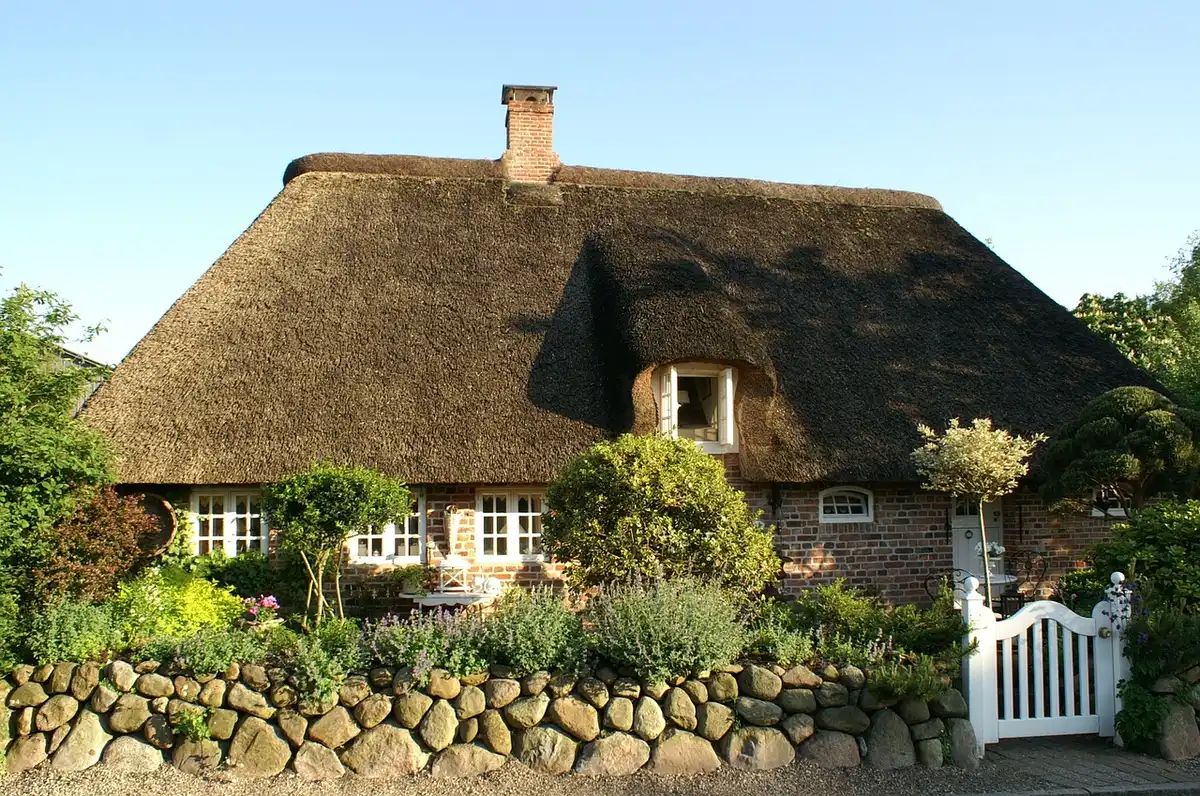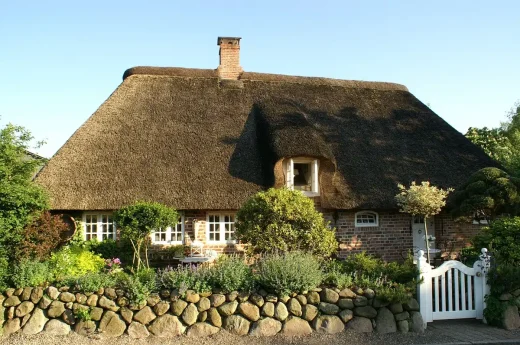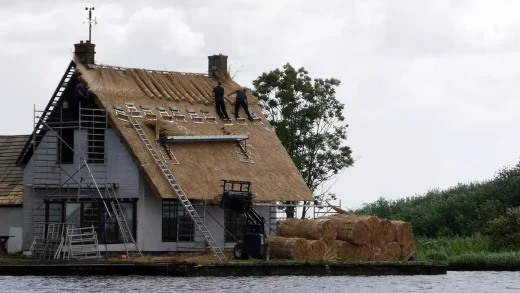Modern thatched roof revival guide, House roofing maintenance, Permanent property repair
The Revival of the Modern Thatched Roof: A Blend of Tradition and Innovation
6 September 2024
The revival of the modern thatched roof merges time-honored craftsmanship with cutting-edge technology to create unique, sustainable homes. Combining the aesthetic appeal of traditional thatching with the durability and energy efficiency of contemporary materials offers a practical solution for environmentally conscious homeowners.
This blend of old and new has gained traction, especially in regions where maintaining cultural heritage is valued. Thatching today doesn’t just evoke nostalgia; it stands out as a dynamic choice for those seeking eco-friendly living spaces.
Historical Context of Thatched Roofs
Thatched roofs have a rich history that spans centuries, exhibiting a remarkable journey from ancient origins to modern-day rejuvenation. This section covers the key developments and transformations in the history of thatched roofing.
Origins and Evolution
Thatched roofs have their origins in prehistoric times. Archaeological evidence reveals that early humans used reeds, straw, and grasses to create shelter. This practice was widespread due to the availability of these materials and ease of construction.
As societies advanced, thatched roofs became more sophisticated. Techniques improved, and regional variations emerged. These roofs were practical and economical, providing insulation and durability. In ancient civilizations, like those in Japan and Africa, thatching methods adapted to local climates and materials.
Decline and Resurgence
The decline of thatched roofs began during the Industrial Revolution. The mass production of tiles and shingles made alternative roofing options more affordable and accessible. Urbanization and new building laws also contributed to the decrease in thatched structures, particularly in cities.
However, there has been a notable resurgence in recent years. Modern interest in sustainable and eco-friendly construction has brought thatched roofs back into focus. Contemporary architects and roofing companies, including those in Knoxville, TN, are incorporating traditional thatching techniques with innovative materials to enhance performance and longevity.
Modern Thatching Techniques and Materials
Modern thatching embraces both cutting-edge technology and innovative materials to improve the durability and environmental footprint of traditional thatched roofs.
Innovations in Thatching
Recent advancements in thatching have led to the use of mechanized tools that ensure uniform thickness and tighter bundles. Portable hand-held devices help secure thatch with precision, reducing labor time significantly. Modern coatings and treatments increase the thatch’s fire resistance and longevity, for instance, silicon-based sprays provide additional waterproofing.
Prefabricated thatch panels have become popular for rapid installation. These panels maintain visual authenticity while offering improved insulation properties.
Sustainable and Eco-Friendly Materials
Sustainability remains a core focus in modern thatching. The industry now prioritizes the use of locally sourced, renewable materials such as water reed and wheat straw. These materials possess a lower carbon footprint compared to synthetic alternatives.
Bio-based adhesives and binders replace traditional synthetic ones, reducing environmental impact. Additionally, the sourcing of thatch often supports local agriculture, providing economic benefits to rural communities. Overall, sustainable thatching materials align with eco-friendly construction standards and help in reducing waste.
The choice of sustainable materials doesn’t compromise on quality; it enhances it. By integrating these eco-friendly resources, modern thatching methods sustain both the environment and cultural heritage.
The Aesthetics and Practical Benefits
Modern thatched roofs offer both visual charm and practical advantages. These roofs seamlessly blend traditional aesthetics with contemporary efficiency.
Cultural Significance and Aesthetic Appeal
Thatched roofs carry a deep cultural significance, especially in regions with a long history of using natural materials. These roofs offer a nostalgic link to heritage while adding a unique, rustic charm. Roofing companies Knoxville TN have started incorporating thatching techniques to cater to both historical preservation and modern aesthetic preferences.
Thatching can be customized to suit various architectural styles. The visual texture and natural tones of a thatched roof are rarely achievable with conventional roofing materials.
Insulation and Durability Benefits
Thatched roofs excel in providing natural insulation. The dense layering of materials helps to maintain interior temperatures, reducing heating and cooling costs. This eco-friendly insulation method appeals to those seeking sustainable living solutions.
Durability is another key advantage. When properly maintained, thatched roofs can last several decades, with some enduring up to 60 years. Roofing companies in Knoxville, TN, emphasize maintenance routines that ensure long-lasting performance. For more information visit: https://pinnaclehomeimprovements.com/tennessee/knoxville/roofing-contractors/ .
Thatched roofs are resistant to both temperature fluctuations and certain weather conditions, making them a viable option in various climates. Their construction allows for excellent drainage, reducing the risk of leaks and water damage.
Comments on this guide to The Revival of the Modern Thatched Roof: A Blend of Tradition and Innovation article are welcome.
Roofing Articles
Roofing Posts
Flat roof repair

image source : pixabay.com
Insulation Options for Your Roof
Property Design
Contemporary Residential Property Design
Comments / photos for the Modern Thatched Roof Revival advice page welcome.





